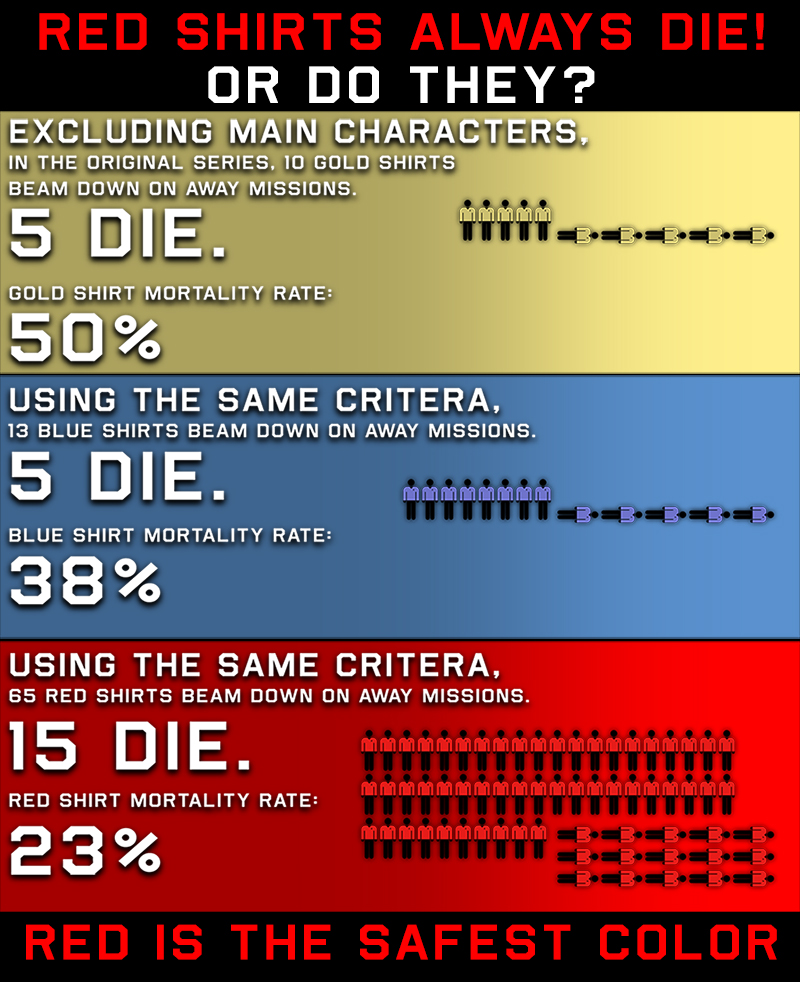I think not!
People always say that when beaming down to a planet, the red shirts are bound to die. But actually running the numbers tells a different story.
The real difference is plot armor. When you account for the fact that fewer main characters are red shirts, and that MOST of the time, only Kirk, Spock, and McCoy beam down to the planet, red shirts appear to die more than other shirt colors. But take out the invincible main characters, and immediately red shirts become the safest color. Basically... if you're not a main character... you'd better hope you're wearing red!

People always say that when beaming down to a planet, the red shirts are bound to die. But actually running the numbers tells a different story.
The real difference is plot armor. When you account for the fact that fewer main characters are red shirts, and that MOST of the time, only Kirk, Spock, and McCoy beam down to the planet, red shirts appear to die more than other shirt colors. But take out the invincible main characters, and immediately red shirts become the safest color. Basically... if you're not a main character... you'd better hope you're wearing red!


